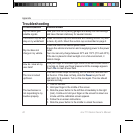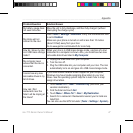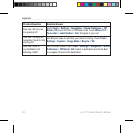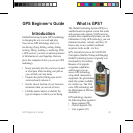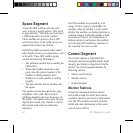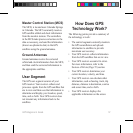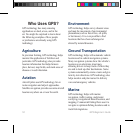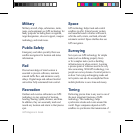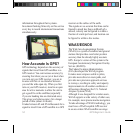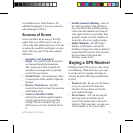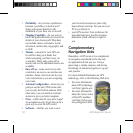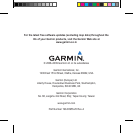GPS Beginner’s Guide 51
Master Control Station (MCS)
The MCS) is located near Colorado Springs
in Colorado. The MCS constantly receives
GPS satellite orbital and clock information
from the monitor stations. The controllers
in the MCS make precise corrections to the
data as necessary, and send the information
(known as ephemeris data) to the GPS
satellites using the ground antennas.
Ground Antennas
Ground antennas receive the corrected
orbital and clock information from the MCS,
and then send the corrected information to
the appropriate satellites.
User Segment
The GPS user segment consists of your
GPS receiver. Your receiver collects and
processes signals from the GPS satellites that
are in view and then uses that information to
determine and display your location, speed,
time, and so forth. Your GPS receiver does
not transmit any information back to the
satellites.
How Does GPS
Technology Work?
The following points provide a summary of
the technology at work:
The control segment constantly monitors •
the GPS constellation and uploads
information to satellites to provide
maximum user accuracy.
Your GPS receiver collects information •
from the GPS satellites that are in view.
Your GPS receiver accounts for errors. •
For more information, refer to the
Sources of Errors (Page 55) section.
Your GPS receiver determines your •
current location, velocity, and time.
Your GPS receiver can calculate other •
information, such as bearing, track, trip
distance, distance to destination, sunrise
and sunset time, and so forth.
Your GPS receiver displays the •
applicable information on the screen.







